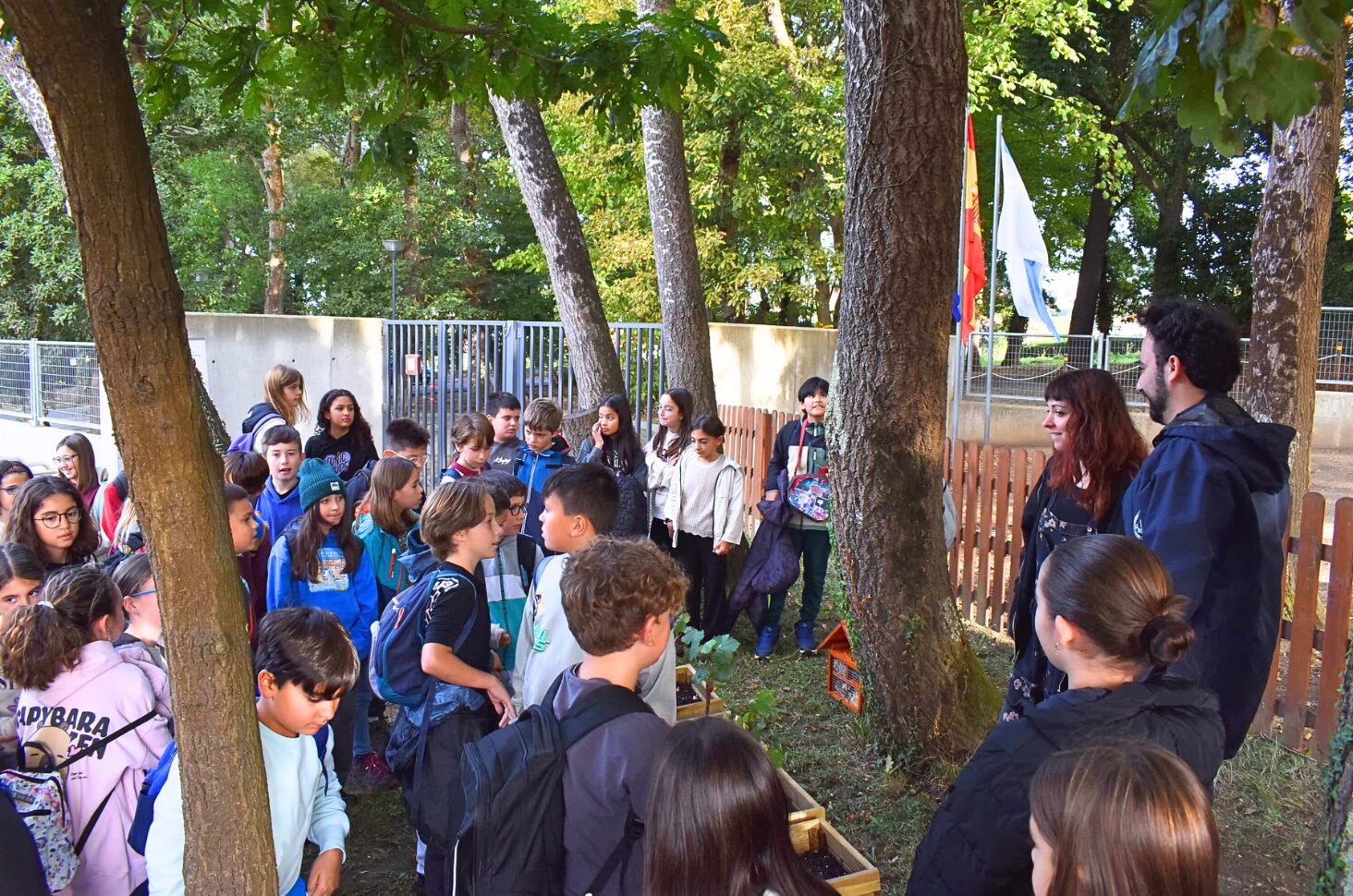How can we explain to 60 ten-year-olds what the natural capital of a vineyard is, what biodiversity means, what green infrastructure or nature-based solutions are? Technical words that are part of our everyday vocabulary, but need to be “translated” into a child’s language. That was the challenge of the educational activity organized last week as part of the ECOSPHEREWINES project, aimed at introducing sustainable viticulture to our young — and demanding — neighbors from CEIP Juana de Vega.
The students became biologists for a day and created a bird nest box and a mini-vineyard in a small plot at the school, where a larger birdhouse and an insect hotel were also installed. We planted four Blanca Legítima vines, the ancestral variety of IGP Betanzos, which they later saw in person at the ECOSPHEREWINES experimental plot.
“The vines,” the technicians explained, “do not live alone. They need the sun, the water, and all the plants, insects, and birds around them to grow under optimal conditions and produce good-quality grapes.”
Homework: take care of the vines, watch for the arrival of new residents in the nest box and insect hotel, and in spring, plant rosemary, basil, and lavender seeds so these living beings have food and can play their role in this small ecosystem — one they, too, are part of. “When the grapes grow, you’ll be able to eat them. We are also part of biodiversity.”



